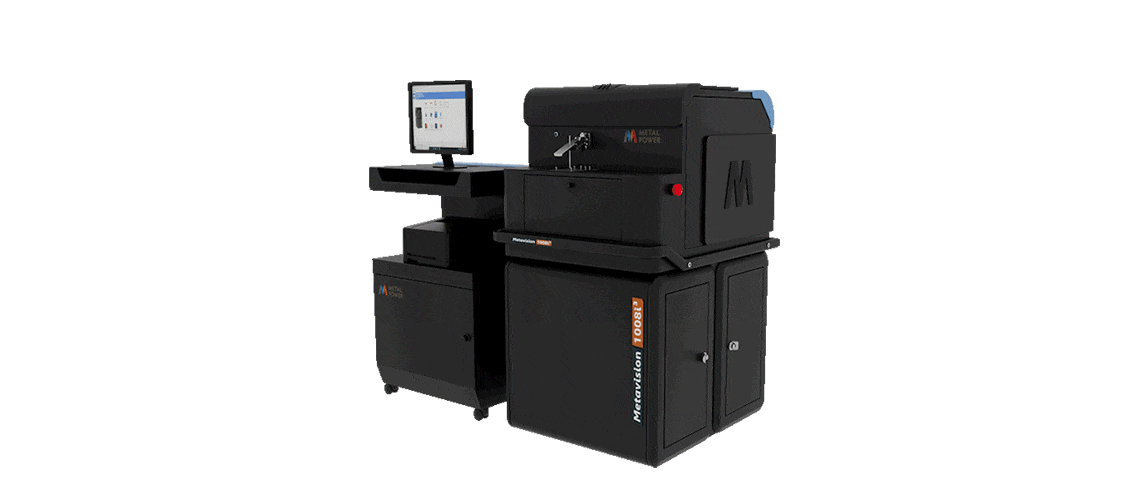The Metavision-1008i3 has been designed to deliver high performance at low detection limits without compromising on economy. Capable of analyzing 60+ elements across ferrous and non-ferrous metals and alloys, with low to single and even sub-ppm limits of detection for each, this spectrometer is ideal for a wide range of quality-conscious users. Being CMOS/CCD-based, there is never any need for hardware upgrades, even if new elements, bases, or matrices are to be added post-purchase, with additions being simple and possible to do even on-site.
Innovative optics driving optimal value
The Metavision-1008i3 features ultra-high-resolution dual optics, employs the latest generation CMOS/CCD detectors and custom-developed optical components, offering class-leading resolution that directly translates into lower detection limits, higher stability, and better elemental coverage than any other OES in its class. Added to this, the entire optical system is hermetically sealed and thermally stabilized to a low temperature, minimizing thermal noise and further improving performance.
With a wavelength span of 118-671 nm, expandable up to 800 nm, the Metavision-1008i3 covers the majority of elemental lines. It boasts the capability to analyze 60+ elements across various bases in standard configurations, with the potential for further expansion. The Metavision-1008i3 has a Reciprocal Linear Dispersion (RLD) of 0.8 nm/mm, and the usage of custom-developed components and applications ensures that it is the only instrument in its class to offer Oxygen analysis in Fe, Cu, and Ti bases (down to 10 ppm) with extremely high precision. The instrument also offers low-level analysis for all trace and alloying elements, including C, S, P, B, Ni, Cr, Li, Na, etc. Moreover, with its latest upgrade, the Metavision-1008i3 now also offers Hydrogen (H) analysis in Titanium.
Powering the best results
For any spectrometer, the quality as well as the stability of analyses are very closely correlated with the quality of the power source and the stability of the current discharge it provides. Additionally, the ability to tailor output at a granular level is critical to ensure that analysis is optimized for each element in every application. The innovative digital plasma generator of the Metavision-1008i3 comprises a fully current-controlled source with ratings that ensure an exceptionally wide range of outputs for each parameter of the discharge. With ultra-granular computer-based control over each parameter, the power unit ensures the highest levels of plasma stability and the ability to generate the ideal spectra for different applications. Designed for inputs of 90-270 V AC, this is also truly global and can be used in any part of the world without restriction.
Modular design
The Metavision-1008i3 has been built to be very easy to service and maintain. Fully modular in its build, the instrument has optimized isolation of sub-systems to deliver twin benefits – no interference / noise and easy access for maintenance and servicing. Each system is easily and independently accessible to engineers for servicing and to operators for routine maintenance tasks. The design also ensures that no sub-system is at risk during any activity including cleaning and changing any of the consumables.
High economy on all aspects
The Metavision-1008i3 offers ultra-rapid analyses and employs an optics design that eliminates the need for any vacuum pumps. It also minimizes Argon consumption to the lowest levels by eliminating constant purging. The instrument is seamlessly upgradable on-site to add elements and calibrations as required. The design of parts that require routine maintenance, the software interface, and applications suite are all designed to be user-friendly, even for laymen. This ensures optimal investment protection and class-leading analysis and ownership costs across each stage of the product lifecycle.
Applications of Metavision-1008i3 Optical Emission Spectrometer
For users, what matters goes far beyond design and feature sets; it involves the quality and usability of outputs. To address this, we have envisioned and developed applications for the Metavision-1008i3 that meet almost every stated and unstated need of users across sectors. This spans not only elemental coverage but also the detection limits and additional outputs the spectrometer delivers. For example, considering the requirements of Pure (OFC and ETP) Copper manufacturers, the instrument provides detection limits as low as 10 ppm (0.001%) for Oxygen, ensuring that users need only a single instrument to cover the entire gamut of chemical testing requirements.
Similarly, the Metavision-1008i3 offers detection limits in the range of 1-10 ppm for virtually every important element in Steels (including C, S, P, B, Mo, V, Al, etc.), along with low detection for N and O. It provides single-ppm detection for Li and Na, as required by firms in the Aluminium sector, and low-level Cobalt detection to meet the requirements of battery manufacturers. It also offers Master Alloy calibrations to meet the needs of alloy-makers who can now accurately assess major as well as trace elements, even in the master alloys. In the design of each application, the first question addressed has been what the user truly requires for the completeness of analyses.

Technical specifications
Optics
- Multi-optics system using latest-generation, high-resolution detectors
- Wavelength range: 120-671 nm (extendable to 800 nm)
- Reciprocal Linear Dispersion (RLD): 0.8 nm/mm
- Cooled low-temperature, thermally stabilized and hermetically
- Sealed optics to ensure high precision and stability
Source
- Digital Pulsed Current Controlled Source
- 90-270 VAC; 50/60 Hz
